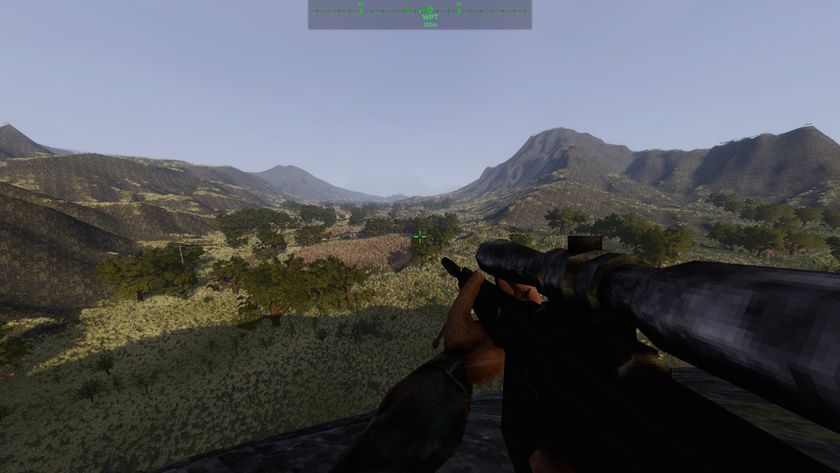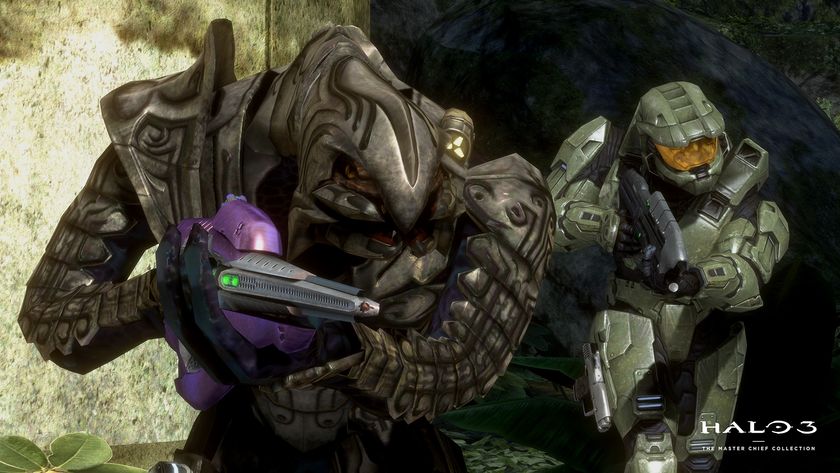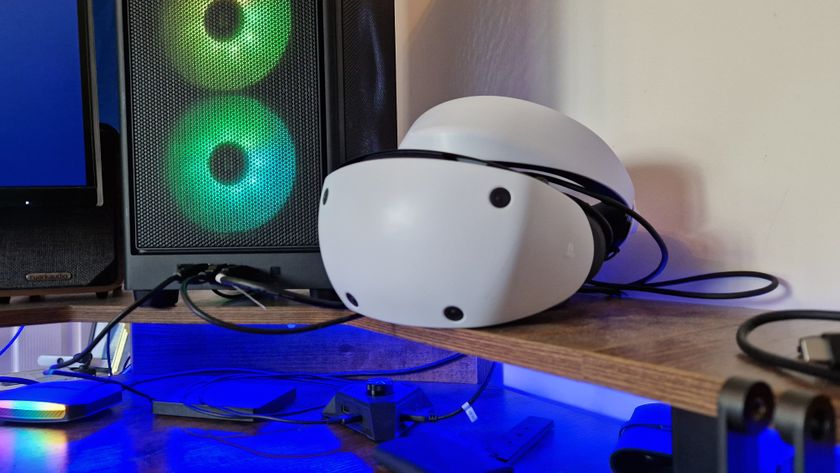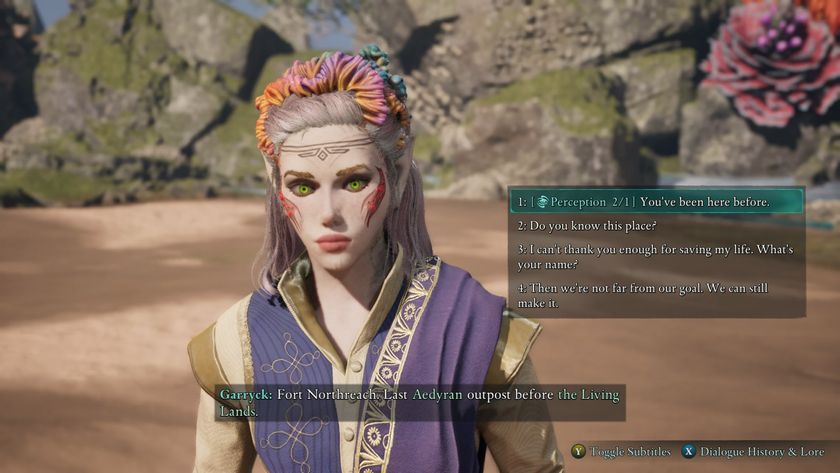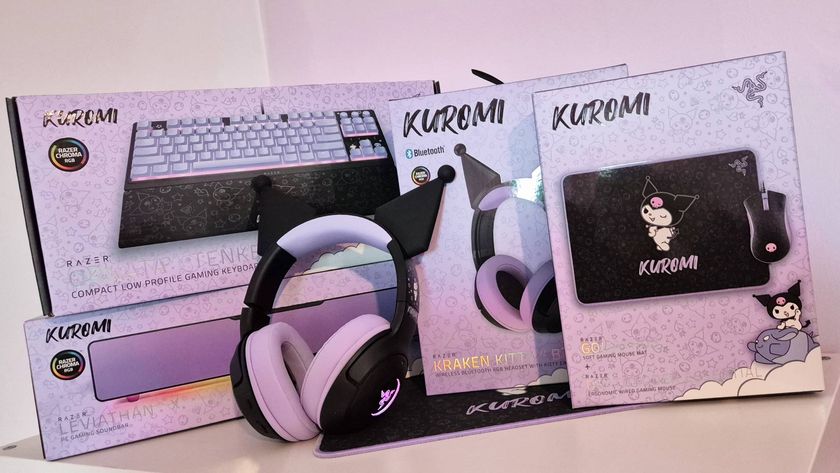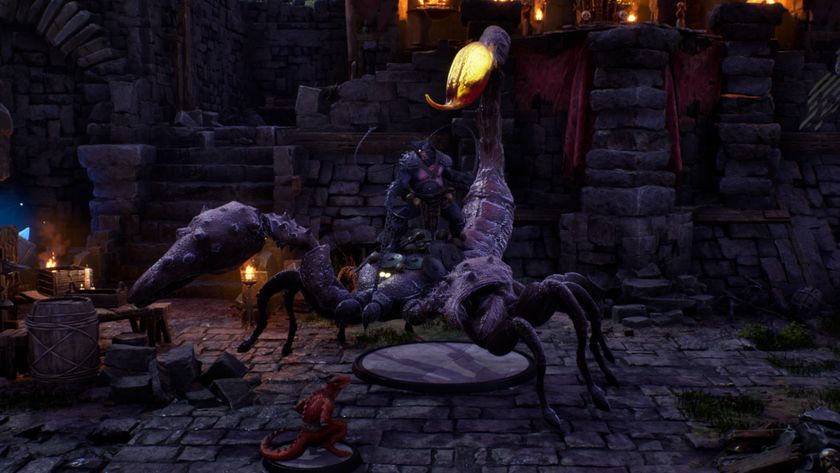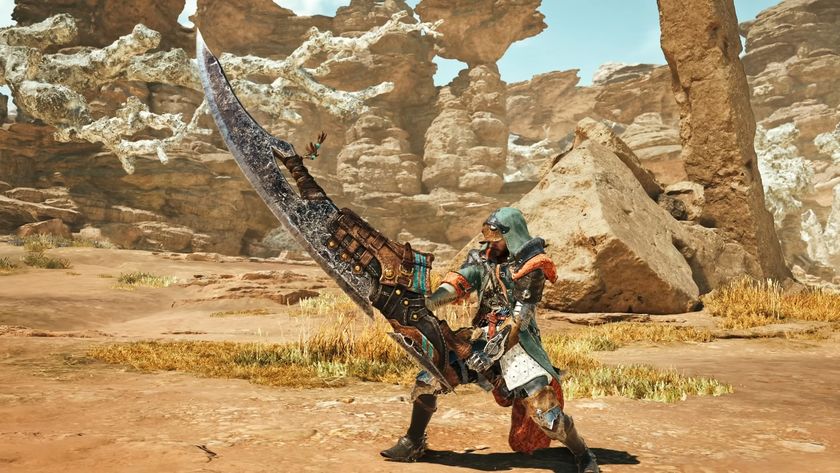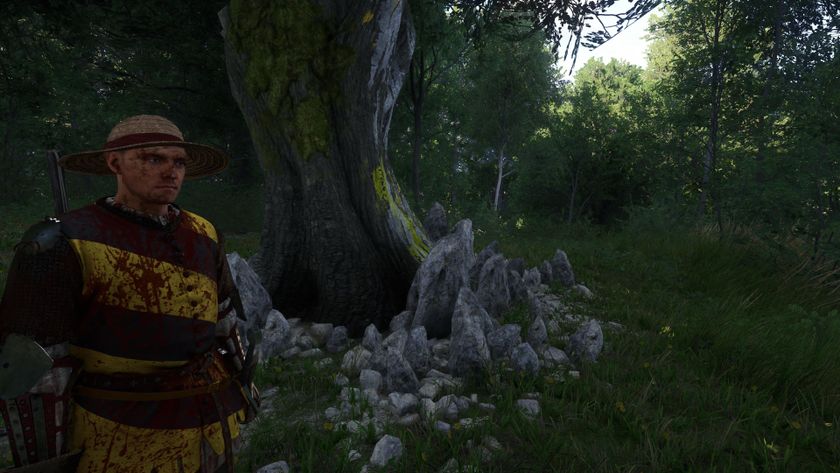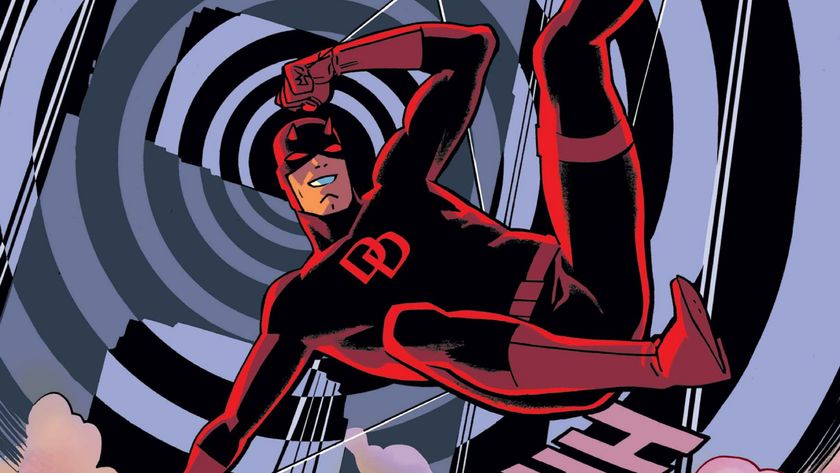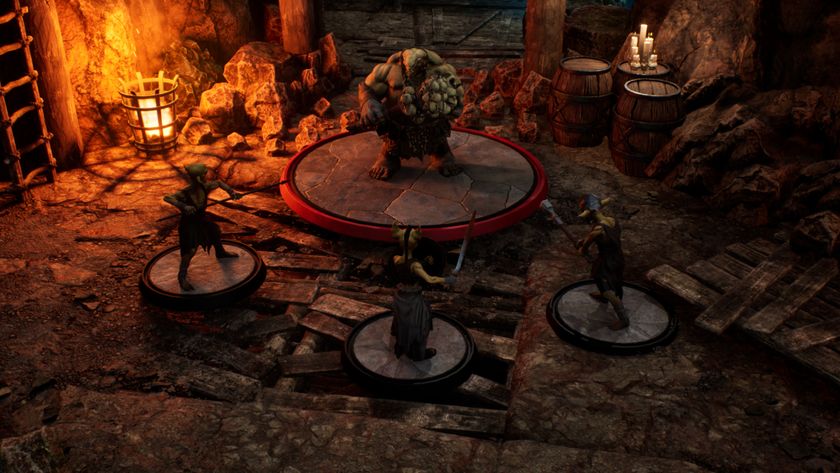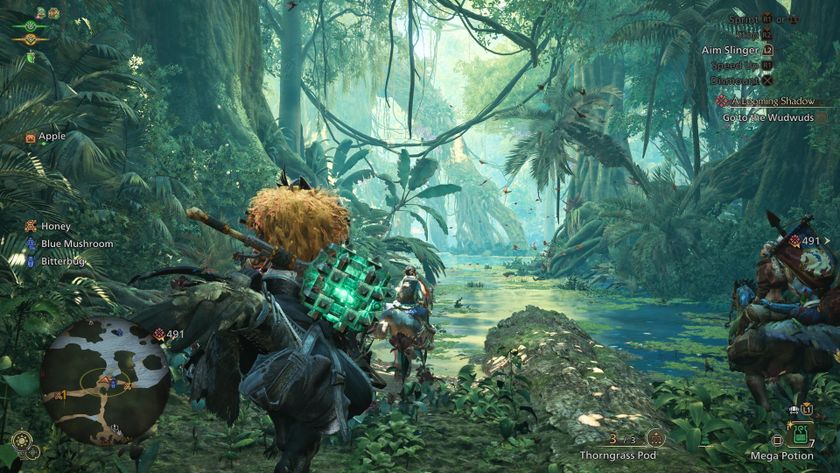Meet the former Starfield dev making a game from a trailer in the woods with AI art
Take a look at a game about wilderness, made while living in one
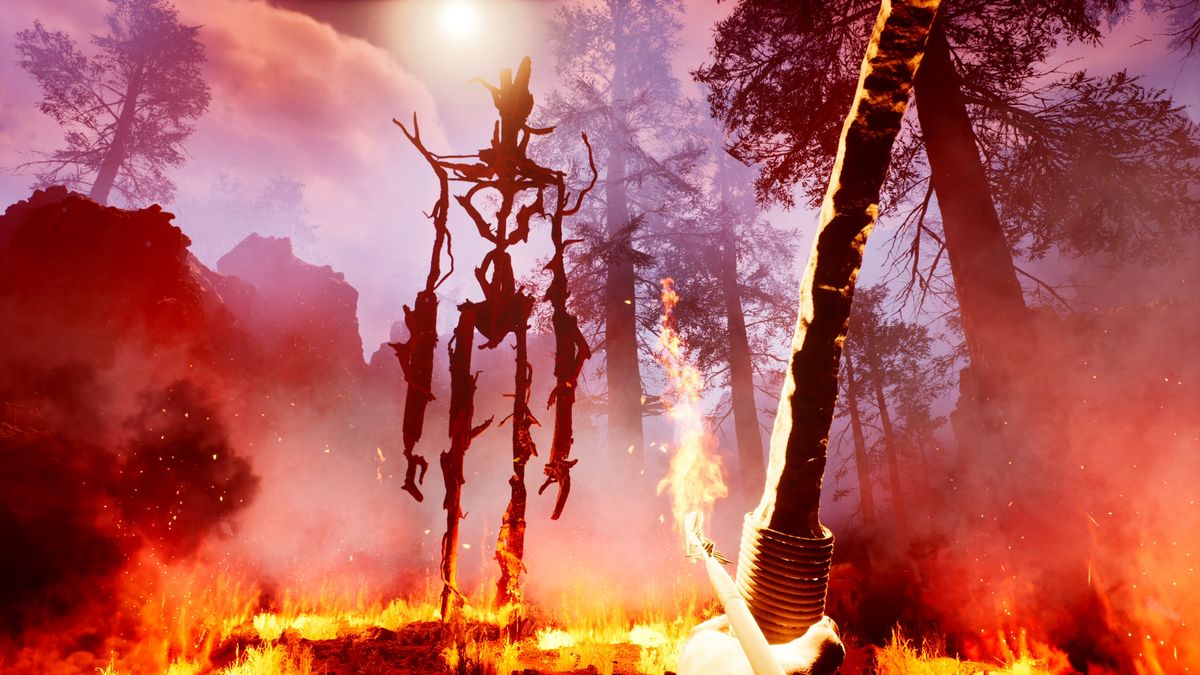
There's a chance, as you read this, that there's a game developer sitting by a lake in a forest, making an Unreal Engine 5 game out of the back of a trailer and using AI to design the monsters. There's a lot to unpack there, but it's also worth mentioning the dev in question is a 18 year vet who cut his teeth on games like Metroid Prime, before spending most of their career at Bethesda working on Fallout, Skyrim, and Starfield. The game itself, The Axis Unseen, is certainly cool – an open world hunting game where you're tracking mythical entities – but it's the production method that interests me the most: a game made on the road, with creatures conjured from the ethereal brains of art AI, and sculpted in a VR headset by a campfire.
A post shared by Nathan Purkeypile (@justpurkeygames)
A photo posted by on
Method game development
The developer in question is Nate Purkeypile, a former Bethesda World/Lighting Artist artist who recently went solo. "I wanted to do something that I wanted to do, instead of what someone else wanted," he explains, adding, "I felt the tools were advanced enough that I could do a lot more than I would have been able to do before, so it seems like a really good time." Of course, developers go solo to make games all the time, but Nate is taking his project on the road. "It's like method game development," he jokes, "making a forest hunting game in the forest".
"The real seed if you dig way back," Nate continues, "is that I grew up in the woods thinking about monsters. Inevitably, when I play hunting games I like the mechanics but my mind always jumps to like, 'what if there were monsters?'" Which is a reasonable question you can apply to almost any activity. In terms of a monster hunting game though, it's because Nate "really liked the tactile feel of paying attention to the wind, and following tracks; the really deep simulator approach to it."
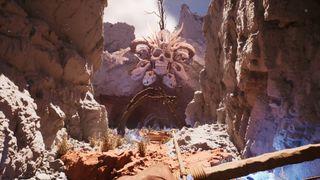
That's led to a game about someone who's crossed over into the world where monsters come from, who has to hunt and survive long enough to work out what's going on and how to get back. "You're trying to find out what happened in this place? Where are these monsters coming from?" Nate explains. And, because it's a game about tracking and hunting things, you'll build out a set of sense based powers to help you. Things like an ability to detect scent as particles in the air, or see tracks on the ground – abilities you gain from the creatures you take down.
Tracker senses
Then there are the arrows you can unlock and craft, that let you do things like slow time in an area or change the wind direction. There's an interplay here that gives these tools different uses depending how you approach a problem. A wind arrow could be used to redirect the wind and hide your scent for example, or you could combine it with a fire arrow to send flames towards an enemy.
Making a game about hunting monsters in a forest… in a forest, is possible thanks to the camper trailer he takes out into the countryside whenever he's feeling creative. "I think it helps get me in the right mindset; what it feels like to be in the wilderness, that's just where my imagination goes as I walk around in the forest. Thinking about the monsters, how the game would work and you look at actual tracks. It's nice to actually be out there and think about it." It certainly sounds almost idyllic compared to the usual image of late night office crunch: "sometimes it will be a weekend but sometimes there'll be longer [trips] like a week or so. I'll just be working when the kids are asleep, or other people are busy hanging out by the fire. I did a run through of the whole map just sitting in front of the fire with the laptop".
The free roaming studio setup might sound interesting but that's not the most unusual step. Nate is using art AI called Midjourney to shape his monsters. It's a similar program to Dall-E which you might have heard of from an unofficial spin off, Dall-E Mini, now called Craiyon, creating such modern classics as 'Bo Burnan in Fallout' and 'Siren Head on America's Got Talent'. While that produced some fun plasticine-faced creations, the more advanced versions can conjure far more professional horrors. Things like this:
Sign up to the 12DOVE Newsletter
Weekly digests, tales from the communities you love, and more

"I've been keeping tabs on that AI stuff for a while but it was not great for a long time,'' Nate explains. "Even a few years ago, you'd have those weird fractal dogs from Google that's kind of interesting [but] not useful for anything'. But then MidJourney and Dall-E arrived: "those were a huge step forward and within like 30 minutes I had immediately burned through all my starter credits and just subscribed right away".
In terms of how Nate coaxes monsters from code, it's an iterative process. "I usually start with something general like 'deer monster in a forest,' but then start adding different terms to see what it does, like 'in a foggy forest at night', or 'in the style of HR Gieger', 'like an oil painting', [etc]. You can add in more vague terms, genres even. It also shows you four variants, and then you can ask it to either keep digging down on one of those variants and make four more that are kind of similar, or upscale one you like. So you can just sort of like, go through this web of possibilities."

This method certainly creates some interesting creatures. Things that capture the essence of a monster, while feeling… wrong. "I feel like it's just gonna help me push my monster designs slightly more refined and weirder," says Nate. "I feel like if I did it without [AI], maybe it would just be what people have done before. I want to make a lot of creatures and I want to make them good but I also need to find a pipeline that works for me to do it fast".
There's one last trick in Nate's mobile game studio and that's VR 3D sculpting on a Quest headset. "It lets you experiment easily because you can just sort of push and pull stuff, quickly try something and be like, 'oh no, that sucks' and it's not like a big deal. It's super easy to do it in VR – it's like whittling wood." Even with a VR headset Nate's set up can still be ultra portable: "I'm just using the Quest wirelessly connected to the laptop. [It] all fits in a backpack and you can do it anywhere you can set up."
Axis Unseen currently has a release date of 'when the axis aligns', which I'll take as 'when it's ready'. Until then, if you want to see more about what sort of game gets made in a forest by AI, you can sign up for updates at the official site or take a look on Steam.

I'm GamesRadar's Managing Editor for guides, which means I run GamesRadar's guides and tips content. I also write reviews, previews and features, largely about horror, action adventure, FPS and open world games. I previously worked on Kotaku, and the Official PlayStation Magazine and website.
